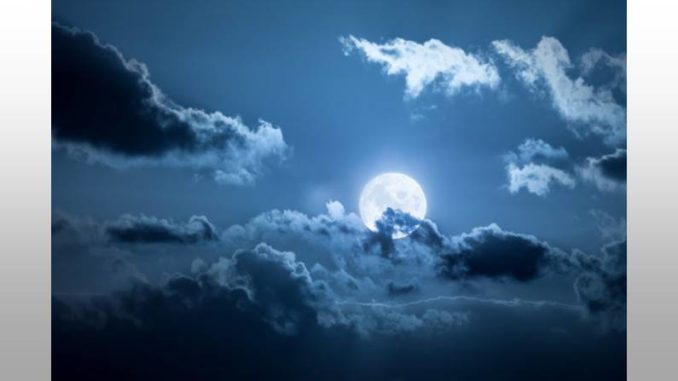
A reminder from SimpleMost: This year is sure to be a delight all around for skywatchers and fans of the moon. Most years have 12 full moons — one every month. That’s because the moon takes a little under a month, or 29 1/2 days, to complete a cycle from full moon to full moon. In 2020, however, observant skywatchers will be able to see 13 full moons, two of which will be supermoons.
Did you know the full moons have names? These mostly originate from Native American tribes or, in some cases, medieval Europeans.
The dates and names for every full moon in 2020 are:
- January 10: Wolf Moon – January’s full moon is named after the howling wolves.
- February 9: Snow Moon – February’s full moon is named after the snowy conditions that are typical during the second month of the year.
- March 9: Worm Moon – This is the first supermoon of the year, and the March full moon is always referred to as the worm moon because of the earthworms that begin to emerge at the end of winter.
- April 7: Pink Moon – This is the second and final supermoon of 2020, and April’s full moon is named for the pink flowers that bloom in early spring.
- May 7: Flower Moon – As temperatures continue to warm up and more plants grow, May’s full moon is named after all the flowers that bloom during this month.
- June 5: Strawberry Moon – June’s full moon is named for the fruits that begin to ripen this time of year.
- July 5: Buck Moon – July’s full moon signifies the new antlers emerging on the heads of whitetail deer during the height of summer.
- August 3: Sturgeon Moon – The full moon in August is named after the large number of fish in lakes where Native American tribes fished.
- September 2: Corn Moon – The September full moon is typically the Harvest Moon, named for the full moon closest to the autumnal equinox. This year, however, that name goes to October’s full moon, an event that only occurs about every three years.
- October 1: Harvest Moon/Hunter’s Moon – The first full moon in October has two names. It’s the full moon closest to the autumnal equinox, so it’s the Harvest Moon. It’s also the Hunter’s moon because it’s the time of year for hunters to store provisions for the long winter ahead.
- October 31: Blue Moon – The second full moon in a month, and it’s happening on Halloween. This rare occurrence only happens every 2 1/2 years.
- November 30: Beaver Moon – November’s full moon coincides with the time to set beaver traps before swamps froze, ensuring a steady supply of warm winter furs.
- December 29: Cold Moon – Winter begins in the Northern Hemisphere, and the cold weather begins.
That’s the excerpt; for the full article from SimpleMost, visit https://www.simplemost.com/see-13-full-moons-2-supermoons-a-blue-moon-in-2020/


